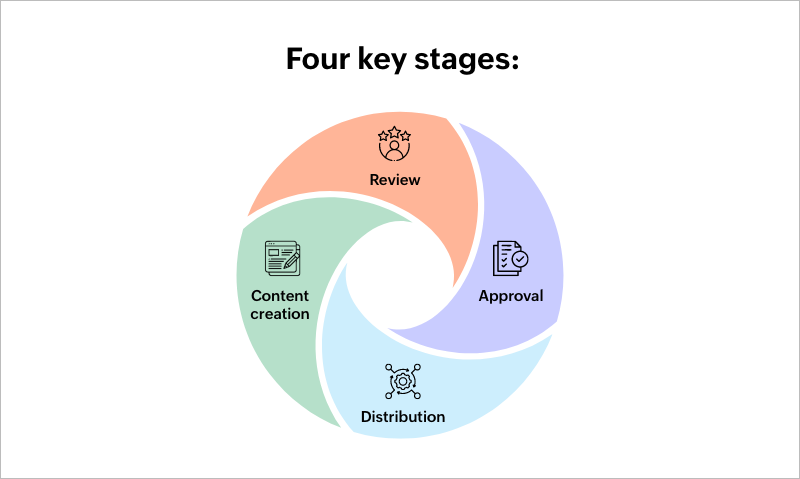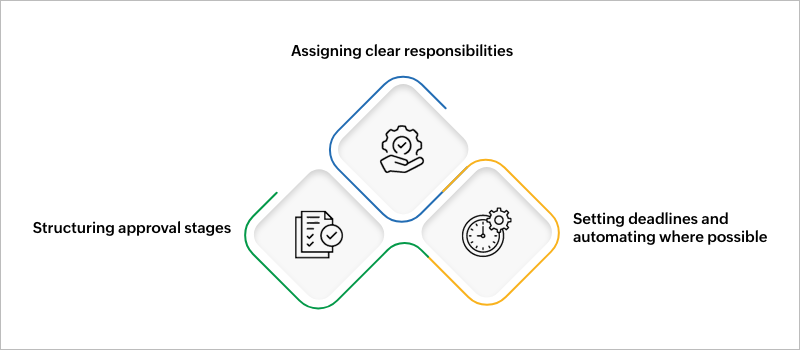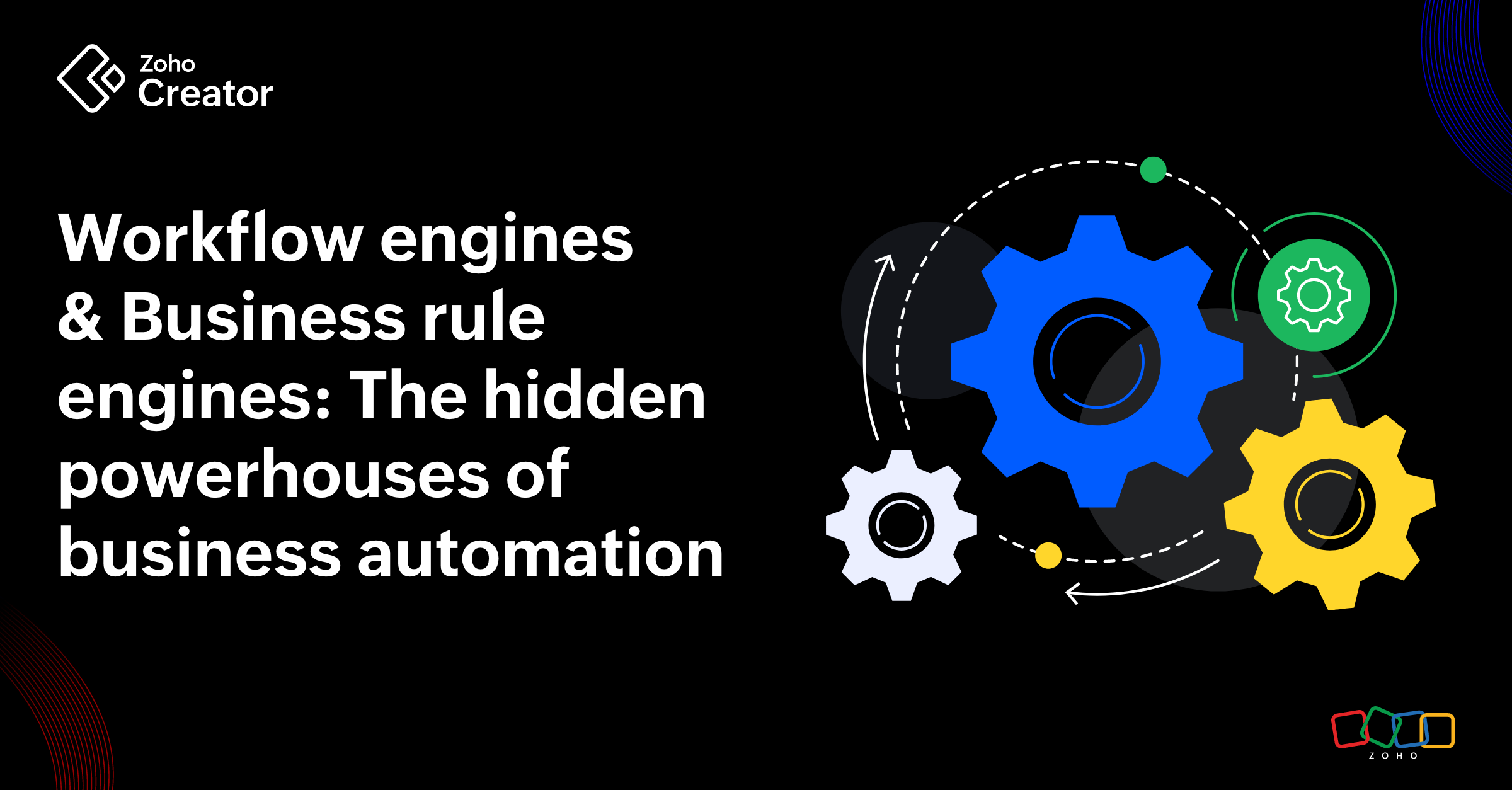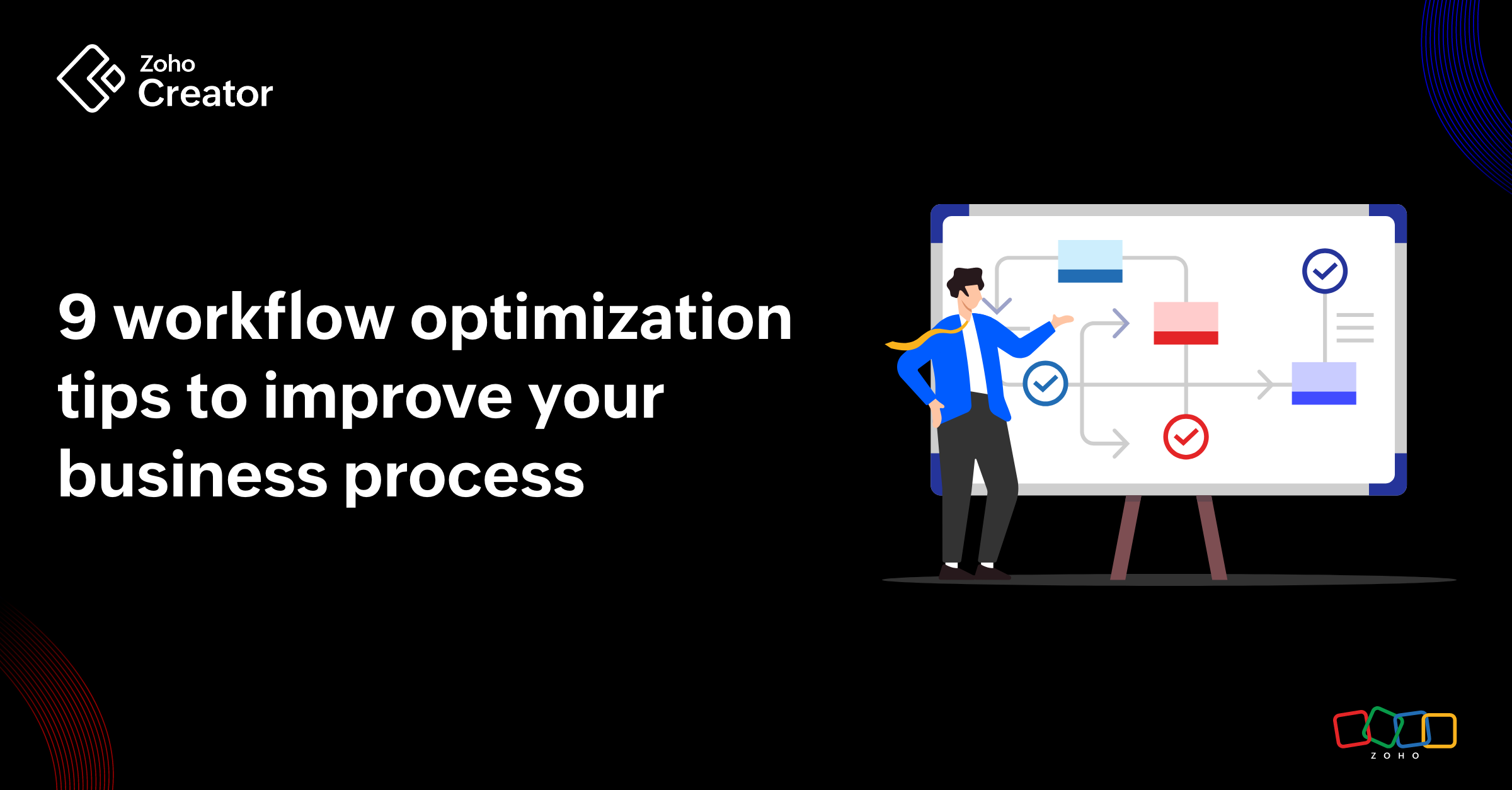- HOME
- Know Your Tech
- Content approval workflow guide: How to streamline processes so that you never miss a deadline again
Content approval workflow guide: How to streamline processes so that you never miss a deadline again
- Last Updated : May 2, 2025
- 16 Views
- 5 Min Read
When it comes to content marketing, quality matters. You know that every piece you put out represents your brand, so having a technique that keeps the content creation process on track is key.
That’s where a content management workflow comes into play. Essentially, a content workflow is a roadmap that goes from content creation to getting your post or article out there.
There are four key stages in this journey: content creation, review, approval, and distribution.

- In the creation stage, ideas are brainstormed, research is gathered, and the first draft of the content is produced.
- Next comes the review stage, where your team checks the content for accuracy, tone, style, and errors.
- Once the content meets basic quality standards, it moves to the approval stage, where final checks are made and the green light is given for the content to be shared.
- Finally, the distribution stage sees the content published across platforms, newsletters, websites, or any channel your team uses to reach your audience.
Each of these stages serves a specific purpose, helping you catch potential issues early on and ensuring the final result is quality content that speaks directly to your target audience.
How a disorganized content approval process affects productivity
When you have a disorganized content approval process, problems start piling up:
Lack of ownership
Without knowing who's responsible for the final sign-off, everyone starts assuming someone else will catch the mistake. That can lead to endless rounds of revisions where the same mistakes keep getting overlooked or new ones introduced.
Endless revisions
Endless revisions can turn a simple idea into a long, tiring ordeal. Each round of changes means another cycle of feedback and more corrections. With all these back-and-forth exchanges, deadlines start slipping, and the impact on productivity can be substantial.
Missed deadlines
The review phase is another common point where things can break down. One missed deadline—or a team member juggling too much—can bring the entire process to a halt.
Over time, these bottlenecks slow down the whole production line, making your content production slower. In the long run, a disorganized process not only frustrates the team but also impacts your content marketing strategy.
Ways to create an efficient content approval workflow
Here are a few steps you can take to improve your content creation workflow:

Structuring approval stages
One of the first steps is to structure the approval stages clearly. The process can be broken down into three main checkpoints:
First draft review
This is where the initial version of your content is reviewed for basic clarity, structure, and alignment with your overall strategy. At this stage, the goal is not to perfect every detail but to ensure that the content has the right foundation. For example, one team can schedule a 48-hour window after the first draft is submitted, during which editors leave feedback. This window encourages everyone to provide their input within a defined timeframe rather than unnecessary delays.
Editing
Once the first draft review is complete, the content moves into a more detailed editing phase. This is where the focus shifts to polishing the language, verifying facts, and ensuring the tone fits the brand’s voice. Good editing can help create a piece that truly connects with the audience as well as aligns with your content strategy.
For example, in a small boutique firm, the editor sometimes spends a day on each piece to smooth out the language and add personality that’s true to the brand.
Final approval
This is the last stage before publication. Here, all parties who need to sign off—whether it’s the content manager, a compliance officer, or senior leadership—review the content. They give the final thumbs-up only when everything looks good. For example, to keep things consistent, some teams introduce a checklist during the final approval phase—covering key points like factual correctness, tone, and alignment with brand guidelines.
By setting these clear stages, you avoid the common pitfall of an open-ended review process.
Assigning clear responsibilities
With structured stages in place, the next step is to assign responsibilities within your content marketing team clearly. This means that every single stage in the approval process should have a defined owner. The content creator, the first reviewer, the editor, and finally, the person giving final approval—each role should be clearly spelled out.
When responsibilities are clear, it’s easier to track back where the process broke down, and you can refine that specific stage next time.
Setting deadlines and automating where possible
Deadlines are fundamental for keeping any content planning on track. Setting a clear deadline for each stage of the process lets everyone know when their part of the work should be done.
Consider a content team that schedules a two-day period for the first draft review, one day for detailed editing, and then another day for final approval. By sticking to these deadlines, the team avoids prolonged cycles of approval that can push back the entire publication schedule.
In such scenarios, automation can really help manage these deadlines. For example, some tools can automatically send reminder emails as deadlines approach. Automation can also manage routine tasks like notifying the next person in the process once a stage is complete.
Instead of waiting for an email or a verbal cue, team members know that as soon as the previous stage is signed off, their review is automatically queued. This keeps the momentum up and ensures everyone is in sync with the overall schedule.
A closer look at how our internal content review works
Now, let me show you how we’ve woven these best practices into our own internal content review tool:
Word-processor integration
As soon as a writer submits a document for review in the system, the app pulls the title and total word count automatically. No more manual data input slowing down the process.
Detailed dashboard for reviewers
In order to help the editorial team keep track of the many docs they're responsible for, the app includes important information at a glance:
Active documents: Everything currently in review
Unassigned documents: New drafts waiting for someone to pick them up
Recent documents: All of that editor's recently reviewed drafts
Words completed and total word count: Widgets that quickly show how many words are left in the queue vs how much has been handled that day
Balanced workloads
Each team member’s queue shows their current assignments. When something lands in “Unassigned,” managers can quickly spot who has the bandwidth and assign it accordingly.
Priority levels
On submitting, owners tag the draft with one of five priorities that let the editor know how time-sensitive the document is:
- Not time sensitive (no specific due date)
- Low (due within two weeks)
- Normal (due within a week)
- Urgent (72 hours)
- Emergency (24 hours)
Automatic escalations
The priority of each doc automatically adjusts, so a "Normal" doc will become an "Urgent" if it's due within 72 hours, ensuring nothing slips through the cracks.
Instant notifications
Once a reviewer finishes the review, the writer gets an email to resolve comments and push the piece to publishing.
This workflow works well for our team because everyone knows their role, deadlines keep things on track, and the app keeps the entire content process moving forward.
The bottom line
A strong content workflow is about bringing clarity and structure to the ones you already have. By taking the time to fine-tune your workflow, you’re setting up your team for long-term success. When everyone knows their role, timelines are clear, and tools support the process, your team can focus more on what really matters: creating great content.
So don't aim for perfection out of the gate. Just start with clarity and build from there.
 Ann Elizabeth Sam
Ann Elizabeth SamHey! I'm Ann, and I work as a content writer at Zoho Creator. I'm exploring the SaaS world through various forms of content creation. Outside of work, I love dancing and would give up anything to read a good murder mystery.



